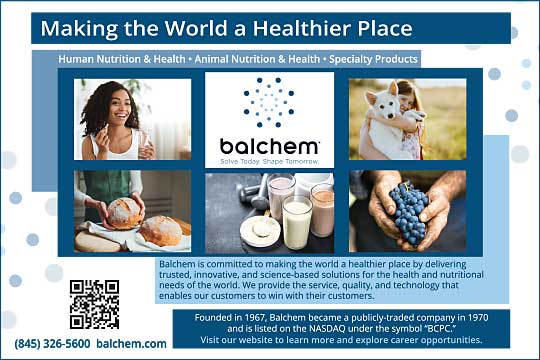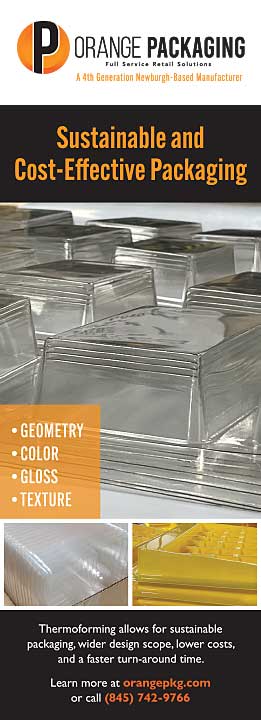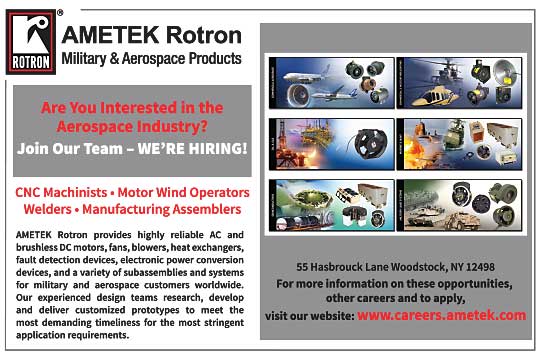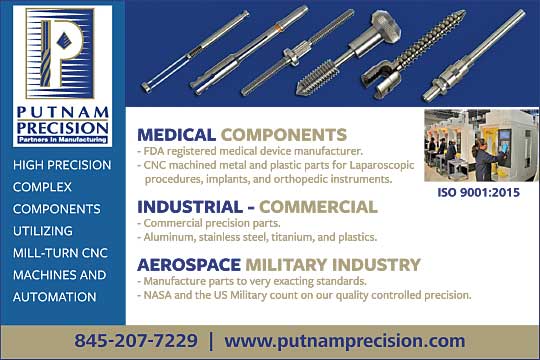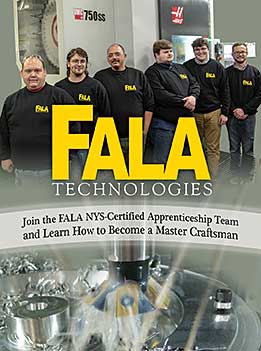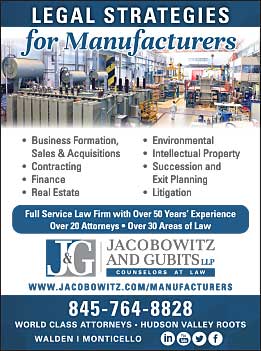President Dr. Donald Christian, State University of New York at New Paltz
REFLECTING ON 12 YEARS OF LEADERSHIP
In 2011, Dr. Donald Christian was named the eighth president of the State University of New York at New Paltz after serving as interim president in 2010-11. During his 12-year tenure, the college has thrived, becoming one of the premier colleges in the SUNY System and attracting some of the best and brightest faculty and students to the Hudson Valley.
On what turned out to be the first day of the final semester of President Christian’s tenure, HV Mfg sat down with him in his office for a wide-ranging conversation on his career, leadership style, the growth of the college and its role in the region’s economic development, the importance of a liberal education, and the impacts of the COVID-19 pandemic on the college and the future of education in general.
HV Mfg: Thank you for agreeing to speak with us. Let’s start at the beginning of your academic career. How did you get into higher education?
DC: Thank you for the opportunity. My career in higher education, oddly enough, started with my passion for the outdoors. I grew up working on my uncle’s dairy farm in Northern Ohio and I have always loved being outdoors – hunting, fishing, hiking. In fact, this past year was the first time in more than 30 years that I missed the opening day of deer hunting season. That love led me to want to study wildlife biology.
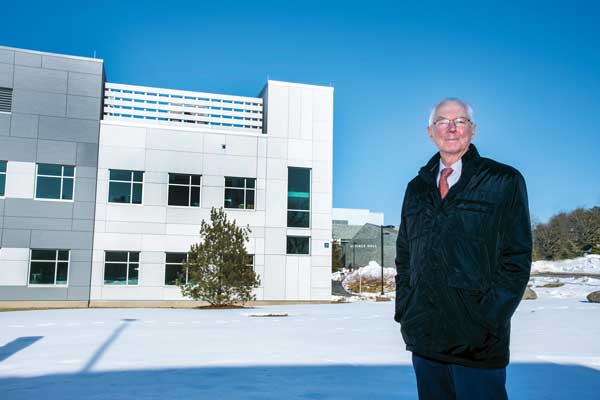
Like most 18-year-olds I wanted to get away from home, so I went to Michigan State because they offered that degree. As a graduate student in zoology at Michigan State, I worked as a teaching assistant in addition to doing research and those interests gelled. It turned out that teaching and an academic career provided a perfect blend of my interests – and I was pretty good at it.
HV Mfg: That puts you in the classroom, how did you make the transition to administration?
DC: Well, after 16 years as a biology professor I was reluctantly dragged into serving as department chair in Biology at the University of Minnesota-Duluth. That provided me a glimpse of the rewards – and challenges – of college administration. After four years as department chair, I moved to the University of Montana where I led a large biological sciences division for seven years, then was Dean of the College of Arts and Sciences at the University of Wisconsin-Eau Claire before coming to New Paltz as Provost in 2009 and then in 2010 being appointed as Interim President. So, I spent 20 years teaching – including time as a department chair, and the last 25 years as a full-time administrator.
HV Mfg: Was there any particular individual you would point to who you would consider a mentor?
DC: Not one, but at least four. I reported to four different deans while serving as department chair and biology divisional administrator. They really set the stage for my leadership and administrative trajectory. I learned something from each of them. Dedication to institutional good – gathering full input to make decisions, but then acting decisively – working hard at effective communication and helping people understand the basis of decisions even if, especially if, they disagreed with those decisions.
HV Mfg: There’s a lot of talk about the relative value of a college degree in today’s economy. With your 45 years in the field, can you make the case for a college education – in particular a liberal arts education?
DC: I’m glad you asked! The economic case in favor of a college degree is clear. Despite the stories of college graduates unemployed and living in their parents’ basements playing video games following the great recession, the fact is that individuals with college degrees were far more protected from unemployment or underemployment than those without degrees. Following that recession, job recovery was stronger for college graduates – particularly those with advanced degrees.
HV Mfg: What about student debt?
DC: You can’t talk about the value of a degree without talking about its cost and student debt. SUNY is, by nearly all accounts, a great value, and we have worked very hard to keep it that way. As far as debt goes, we all hear about the students graduating with six-figure debt. The reality is they are a small fraction of graduates. About 40% of New Paltz graduates have zero loan debt. The average loan debt for students who have borrowed is $24,400.
And studies show that a high proportion of those students will pay that debt off while they are still in their 20s.
HV Mfg: And the value of a liberal arts education?
DC: I typically use the language of “liberal education,” rather than liberal arts education because a good liberal education includes knowledge of the physical and natural world as well as knowledge of human cultures. It includes things like inquiry and analysis, creative and critical thinking, written and oral communication, quantitative literacy, information literacy, and problem-solving skills.
It includes experience working collaboratively and in teams. And, I believe, it needs to include experiences and assignments that produce a strong sense of personal and social responsibility.
HV Mfg: Is New Paltz delivering that education?
DC: Yes, I think so. There is always more to do but I think we do a very good job. We need more of what I call high-impact practices. Things like writing intensive courses, undergraduate research, internships, and community-based learning. More senior capstone projects like our student art exhibitions and engineering expo. That said, I have spoken with many alumni who are successful in jobs and careers that you would never guess based on the content knowledge of their major when they were a student. Their success is instead attributable to those elements of a liberal education that we advance. I love the example of an alum from the 1970s who had a very successful and fulfilling career in the US Foreign Service. Was she a political science major, maybe international relations? No, she majored in art history.
HV Mfg: Many of our members are involved with the engineering expo and the student’s senior design projects. It is a terrific learning experience for all involved – students, faculty and people working in the industry. When we first met, you talked about the value of an engineering degree with a strong liberal arts foundation. We gather you still think this is important?
DC: Yes, for sure. Many engineering problems and solutions have significant cultural, economic, or historical dimensions that are best served by people who are not only great engineers but who also can bring some of those perspectives that grow from a good liberal education.
I would also venture to guess that Council of Industry members looking to hire engineers place great emphasis on communication, information literacy, teamwork, and research skills. And, those skills open important career doors beyond engineering to management and leadership.
HV Mfg: Through the years, we have spent quite a bit of time on campus. It’s hard not to notice all the new construction and renovations. What’s new?
DC: A lot is new, and a lot has been updated. In the last decade we have built three new buildings and completed seven major renovations. There have also been many smaller renovations and infrastructure improvements. We renovated Old Main – the oldest building on campus, Wooster Hall – which is vastly different from its original 1960s Brutalist style, and The Sojourner Truth Library – which is like a second home to so many of our students.
We built a new residence hall and, probably of more interest to your members, a new science building and an Engineering Innovation Hub.
HV Mfg: Tell us more about the Engineering Innovation Hub. The 3D printing Center resides there, correct?
DC: Yes. The Engineering Innovation Hub houses our 3D printing center – that we branded, The Hudson Valley Additive Manufacturing Center, as well as our widely popular mechanical engineering program. I would be remiss if I did not acknowledge the important role the Council of Industry played in helping us launch the mechanical engineering program. You really helped us make the case to SUNY that the program was needed in the region. The Additive Manufacturing Center is one of the more exciting developments at the college during my presidency. It is a true, collaboration between government, industry, and education and, to our conversation of liberal education earlier, it is by design, an interface between art and engineering. The success of the center is the result of the great work of Dan Freedman, Dean of the School of Science and Engineering, and Center Staff, Aaron Nelson and New Paltz alum, Kat Wilson. To build the Center we received an award from Empire State Development and generous support from our state elected officials, Central Hudson, the Dyson Foundation, the SUNY New Paltz Foundation, and many private and other industry donors. It houses state-of-the-art equipment and can print in a wide variety of materials.
The center provides distinctive opportunities for student interns who come from fields as diverse as art, mechanical or computer engineering, graphic design, and theatre. We work with local industry on engineering and product solutions and develop prototypes.
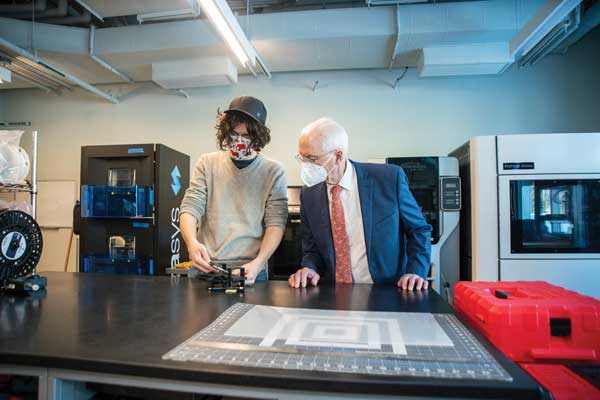
HV Mfg: Let’s talk more about the College’s role in regional economic development. We know this has been a priority for you.
DC: It has, and I think we have made excellent progress. We just talked about the Additive Manufacturing Center, and the School of Science and Engineering. The School of Business is also quite engaged. It is home to the Hudson Valley Venture Hub that supports entrepreneurs at all stages, including student entrepreneurs. I am also proud of my leadership role on the Mid-Hudson Regional Economic Development Council.
HV Mfg: You are the co-chair of the MHREDC correct? What is the role of the Council?
DC: I have served as the Council co-chair since 2018 and am stepping down this month. I have to say I will miss that work very much when I retire in June. The MHREDC is responsible for setting regional Economic Development Strategy, coordinating various stakeholders, and making recommendations on State funding for projects. It has been a rewarding experience for many reasons, not least of which is working with the other Council members who, though they come from very diverse organizations with seemingly conflicting missions, work together in a very collegial way for the betterment of the Hudson Valley.
HV Mfg: We used to think that being a college president must be one of the best jobs there is. Then came March 2020, with all the ensuing chaos and we thought that being a college president might be one of the most difficult there is.
DC: That’s not far off, but being a college president is rewarding! Managing through the pandemic was one of the most complex and ambiguous challenges that I ever encountered. We put together a leadership team that met daily – and still meets frequently – that team organized our response to the changing pandemic dynamics and public health guidance. We knew early on that we needed to pivot and change course, sometimes quickly and often in the face of incomplete or conflicting information. I’ve commented numerous times and I’ll say it here again – I am so impressed with our students and their willingness to comply with SUNY and state health directives so that we are able to have class in person. They are a wonder.
I also can’t say enough about our employees. They wrestled with many challenges – some coming to campus every day, others learning to be effective while working remotely. Faculty learning to teach well online – some having never attempted it before – all while managing their own health and the health of family members – in some instances taking care of little ones in the absence of childcare.
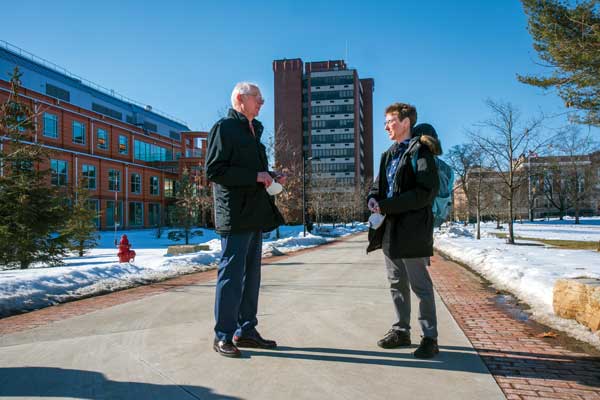
HV Mfg: What lessons will you take from the pandemic; what changes are permanent?
DC: On the education side, I believe the minds of many people have been opened to being able to teach remotely and do it well. That will help us reach students who we have not served before – such as through our online bachelor’s degree completion program that launched this semester, and graduate programs tailored to working professionals.
I also think strategic telecommuting will likely stay with us into the future. We have for a long time, been keenly aware of the importance of, and our reliance on, information technology. Managing through the pandemic gave us further insights in using technology to do our work better – even in our new normal.
HV Mfg: Describe your leadership style. Has it been influenced by your background in science?
DC: Yes, I’m sure it has. I am committed to using data and evidence to inform my decisions.
I think that speaks to my background in science.
I have been told that I am deliberative, fair, committed to data and evidence, and that I listen to diverse perspectives and ideas. I never presume to have the right answers and believe I’ve been effective at taking and integrating advice from members of my leadership team, deans, faculty, staff, students, and alumni.
Early in my presidency, I heard Harvard President Drew Faust state that communication is arguably THE essential act of a president, and I have been committed to open and clear communication to help members of our community understand the basis for decisions and actions – why we can or cannot do certain things and the broader contexts in which the college works.
HV Mfg: Reflecting on your time at New Paltz – What are you most proud of? What remains undone?
DC: That’s like asking a parent which child they love the most!
I’m proud of our high graduation rates and the fact that -compared with higher education in general – that rate varies very little by race, economic status, and first-generation students. I’m proud that we have been recognized for our distinctive positive impact on the socioeconomic mobility of our graduates (in one ranking, we are in the top 3% of colleges and universities in the country.) I’m proud that our students see New Paltz as such a welcoming, accepting learning community. I’m also proud of the great progress we have made in building a culture of philanthropy – building capacity over time so that this past year we completed a first ever fund-raising campaign, which exceeded our goal, raising $24.7 million.
What’s undone? I guess the same things that affect higher education overall. How to continue becoming a truly equitable and inclusive institution. How to reach students and segments of our society for whom higher education has not reached or served well. How to continue expanding the sorts of high-impact educational practices we talked about earlier. How to renew public faith and support for higher education and the multiple individual and societal benefits of an educated citizenry.
HV Mfg: Thank you for your time – We hope you get to enjoy more of the Hudson Valley’s great outdoors in your retirement.
DC: I enjoyed it – and you can count on it!


